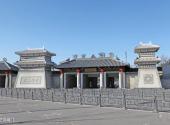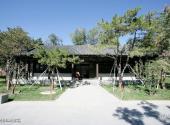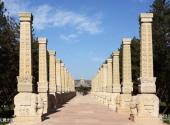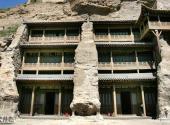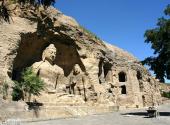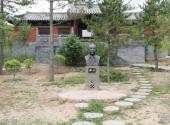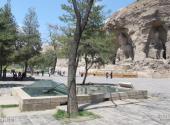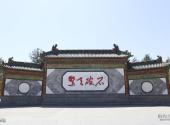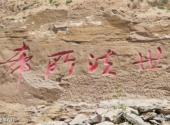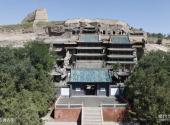
Scenic spot introduction:
Datong Yungang Grottoes is one of the largest grottoes in my country. Together with Dunhuang Mogao Grottoes, Luoyang Longmen Grottoes and Maijishan Grottoes, it is also known as China's four major grotto art treasures. It is located at the southern foot of Wuzhou Mountain in the western suburbs of Datong City, Shanxi Province. The grottoes are carved into the mountain and stretch for 1 kilometer from east to west. There are 45 main caves, 252 large and small cave niches, and more than 51,000 large and small statues. It is one of the largest ancient grotto groups in my country. Among them, the Tan Yao Five Grottoes have a rigorous and unified layout and design. They are classic masterpieces from the first peak period of Chinese Buddhist art.The statues in Yungang Grottoes are magnificent and rich in content. They are the crown of Chinese stone carving art in the 5th century AD and are known as the treasure house of ancient Chinese carving art. According to the time of excavation, it can be divided into three phases: early, middle and late. The styles of grotto sculptures in different periods also have their own characteristics.
Among the stone sculptures that stretch for one kilometer, the statues range from more than ten meters in size to stone sculptures as small as a few centimeters. Huge boulders lie across it, and the stone sculptures are everywhere, making it a spectacular sight. The faces, bodies, and clothing lines of these Buddha statues in the grottoes, flying to the sky, and patrons all bear the wisdom and hardships of the ancient working people. In addition, the music, dance and acrobatic sculptures left in the grottoes also reflect the popular Buddhist thought at that time and the social life of the Northern Wei Dynasty.
Attractions distribution:
The Yungang Grottoes are divided into three parts: east, middle and west. The Buddhist niches in the grottoes are densely packed like honeycombs, and large, medium and small caves are densely embedded in half of Yungang. The eastern grottoes are mostly built for pagodas, so they are also called pagoda caves; the central grottoes are each divided into two chambers, front and back, with the main Buddha in the middle, and the cave walls and ceiling are covered with reliefs; the western grottoes are composed of small and medium-sized caves and small niches with additional carvings. Most of them were built in a later period, and most of them were works after the Northern Wei Dynasty moved the capital to Luoyang. Among the dozens of caves in Yungang, Tanyao Five Grottoes were the earliest to be excavated and the most magnificent. The fifth and sixth caves and Wuhua Cave are rich in content, magnificent and magnificent, and are the essence of Yungang art. Cave 9 to Cave 13 are extremely gorgeous due to the clay paintings and are commonly known as "Wuhua Cave".Scenic spot qualifications:
National 5A scenic spot, world cultural heritage, national key cultural relics protection unitScenic spot features:
photography, buddhist resorts, religion, grottoesScenic spot map:
Travel Notes of Travellers:
- Tiedan: The Edge of Mount Wutai
- Travel guide: The 100 most beautiful scenic spots in China!
- Albert: Shanxi Hukou Waterfall, Pingyao Ancient City, Hengshan Mountain, Yungang Grottoes 3-Day Classic Tour
- Travel Guide: Datong Free Travel Guide for Two Days 2018
travelling guideline:
Scenic area activities: On the annual Cultural Heritage Day (June 10), Yungang Tourism Festival (August 18 → August 28), May Day, National Day Golden Week and other important festivals, cultural performances, Yungang Grottoes, etc. Special tourism projects such as special exhibitions are rich in content and have distinctive cultural characteristics.
Tour route:
Just watch them in order of cave number.
Best time to visit:
May-October
Shopping recommendations:
The Yungang Grottoes tourism products are rich in variety and distinctive features, including special commemorative coins, special stamps, silver plates, gold foil paintings, books, CDs, crystal crafts, especially coal sculptures, which not only reflect the characteristics of Datong's "coal capital", but also integrate The strong grotto culture is one of the most distinctive products in Datong area.
Scenic spot map:
Scenic spot location:
China>Shanxi Province>Datong City>Urban Area
How to get there:
1. There are buses and coaches outside the west gate of Datong City that you can take.
2. Take Route 4 from Datong Railway Station to Xinkaili Bus Station in the west of the city, then transfer to Route 3 to the east gate of Yungang Scenic Area.
3. You can take the minibus from Train Station D Yanzishan next to the Hongqi Hotel, and get off halfway for 5 yuan.
Scenic area map:
Click to expand the scenic area map
Yungang Grottoes ticket price:
December 1st to the end of February: 80 yuan/person
March 1st to November 30th: 125 yuan/person
Discount: 1. Children under 1.4 meters are free of charge;
2. Retired cadres are free of charge with their retirement certificates;
3. Active-duty soldiers are free of charge with valid certificates;
4. Disabled people and revolutionary disabled soldiers are free of charge with their disability certificates;
5. Seniors with valid IDs, those aged 65 and above are half-priced, and those aged 70 (inclusive) and above are free of charge;
6. Students with valid IDs, half-ticketed. (Graduate student certificate is valid)
Scenic area opening hours:
Summer: April 15th - October 27th, 8:30-17:20
Winter: October 28th - April 14th, 8:30-17:00
Holidays based on The opening hours may be extended appropriately due to actual circumstances.


